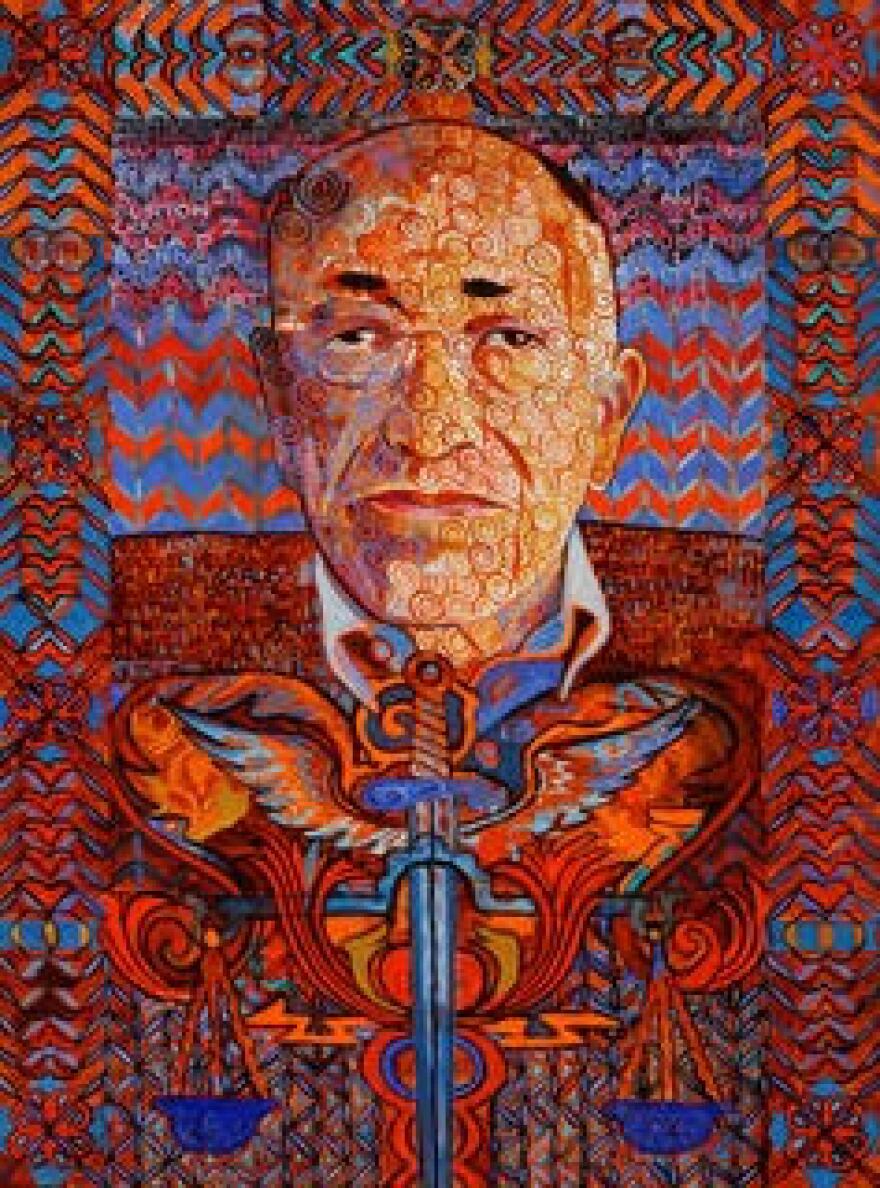When Steven González was first named to the Washington state Supreme Court, as an associate justice in 2011, he brought his family to the Temple of Justice – that large, sandstone building in Olympia where the court meets.
They were in a hallway looking at portraits of the previous justices – black-robed white men with serious expressions on their faces, staring out from the walls.
“And our younger boy … said, ‘Dad, how come none of them look like us?’ ” González told KNKX. “For me, I thought, well, that’s an important question. They don’t, but it’s changing.”
González decided he could do something about that. He says he took his case to various committees, seeking to add some portraits of more recent justices to the walls.
“Nobody took up that cause, so I went directly to my good friend Alfredo Arreguin,” he said.
Arreguin, now in his mid-80s, is an acclaimed Mexican American artist who lives in Seattle. He has work in the permanent collection of two Smithsonian museums, he’s received numerous awards, including the Reconocimiento Ohtli, a top honor from the government of Mexico to people who promote Mexican culture abroad. He and González had met some years earlier.
González explained that he wanted Arreguin to paint a portrait of Justice Charles Z. Smith, the Washington Supreme Court’s first Black justice.
“And I said, ‘Look, I have no money, I have no promise that we can even hang it,’ ” González said.
Arreguin met with Justice Smith and his wife, Eleanor. They hit it off. Then he called González to agree to do the painting and asked for some samples of the portraits already hanging in the Temple of Justice – which are about as far as you can get from Arreguin’s signature style of bright colors and repeating patterns.
“And I said my painting is not going to be like classical music. It’s going to be a little bit more like jazz,” Arreguin said. “And [González] says, ‘No, yours is more like Cumbia!’ ”

And just like the musical genre, Arreguin’s portrait of Justice Charles Smith is an upbeat dance of color and patterns, with bold blues and deep reds, zig-zags and swirls and words – the names of people who played prominent roles in Smith’s life.
Smith loved the portrait, reacting enthusiastically at its unveiling in 2014. He died in 2016 at the age of 89.
The painting now hangs in the Temple of Justice. Arreguin has done another portrait – of current Justice Mary Yu – which was set to be publicly unveiled this past summer, but the pandemic put those plans on hold.
Washington state’s Supreme Court is billed as the most diverse in the country, comprised of seven women and two men. The justices variously identify as Black, Latino, Asian American, Native American, white, Jewish, lesbian and disabled.
González, who became chief justice of the Washington Supreme Court in January, says that as the bench changes and becomes more diverse, so should the walls.
“I think we are adding depth, complexity and richness to this court, and I want that reflected,” he said. “And when kids come here, and they often do come and tour the Temple, I want them to see themselves.”





